The built environment is both a challenge and an opportunity in the fight against climate change, contributing significantly to global emissions. In Asia, rapid urbanization and the projected doubling of institutional stock by 2030 make it a critical region for decarbonization efforts. Our recent webinar brought together industry leaders to explore actionable strategies, innovations, and financing models to accelerate decarbonization in Asia’s real estate sector.

1. The Built Environment’s Role in Emissions
Globally, real estate accounts for nearly 40% of carbon emissions, with 28% stemming from building operations and 12% from construction. Asia faces unique challenges due to rapid urbanization, a significant stock of aging buildings, and increasing demand for new construction materials.
Key Discussion Points:
- Retrofitting as a Priority: With 80% of today’s building stock still expected to be standing in 2050, retrofitting existing buildings is essential. Arista, the Global Head of Sustainability at Asia Green Real Estate, emphasized the potential of retrofits to reduce energy consumption by 20–30%.
- Embodied Carbon: Materials like cement and steel, which account for significant emissions, are areas where innovation and regulatory frameworks are urgently needed.
2. Innovations Driving Decarbonization
Technology is a cornerstone for enabling emission reductions in real estate. From data capture to predictive systems, innovation is helping developers optimize energy use and reduce embodied carbon.
Key Innovations Discussed:
- Data Capture and Analysis: Using IoT and AI-enabled platforms to measure, track, and report emissions is critical. For instance, Helen the Managing Partner at AC Ventures, highlighted the role of building management systems and dashboards in consolidating emissions data for better decision-making.
- Predictive Maintenance: New technologies in HVAC systems can analyze weather forecasts and occupancy patterns to optimize heating and cooling, reducing energy use by up to 30%.
- Digital Twins: These simulations, combined with AI, allow developers to predict energy consumption and optimize operational efficiencies.
3. Financing Green Transitions
Cost is a primary barrier to adopting sustainable practices and materials. However, innovative financial mechanisms can lower these barriers.
Highlighted Models:
- Build-Operate-Transfer (BOT) Schemes: As Arista noted, BOT models distribute upfront costs over time, making retrofits more accessible.
- Sustainability-Linked Loans: Institutions like IFC are offering financial products tied to environmental performance, incentivizing developers to pursue green initiatives.
- Green Building Incentives: Singapore’s policies, such as tax rebates, expedited permitting, and density bonuses, provide a model for encouraging sustainable construction.
4. Overcoming Challenges in Material Science
The industry faces hurdles in adopting low-carbon construction materials like green cement and steel due to cost premiums and limited scalability.
Key Insights:
- Adoption of Recycled Materials: Materials like recycled bitumen and fly ash bricks are gaining traction as cost-effective and sustainable alternatives.
- Marketplaces for Sustainable Materials: Platforms like Accacia’s marketplace are helping developers source green building materials, lowering barriers to adoption.
5. Policy and Regulatory Frameworks
Regulation plays a pivotal role in driving decarbonization. Panelists pointed to Singapore as a leader in aligning policies with global standards, while countries like Indonesia and India need to strengthen enforcement.
Examples of Successful Policies:
- Carbon Border Adjustments: The EU’s regulatory framework for materials like cement and steel can serve as a blueprint for Asian countries.
- Utility Decarbonization: Government-mandated shifts toward renewable energy in utility grids are crucial for enabling greener operations.
6. Future Trends in Decarbonization
Looking ahead, the panelists shared an optimistic outlook on the evolution of climate investments and sustainable innovations.
Emerging Trends:
- Integration of Renewable Energy: Rooftop solar and on-site renewable installations are becoming more accessible and widely adopted.
- Focus on Embodied Carbon: Tools to measure and reduce embodied emissions are gaining traction, although standardized certifications remain a challenge.
- Corporate Climate Action: Multinational companies are increasingly embedding sustainability into their operational strategies, driven by both regulatory pressures and cost savings.
A Call to Action
Decarbonizing the built environment in Asia requires a collaborative effort from developers, policymakers, and investors. The need for awareness, innovative financing, and scalable solutions has never been greater. As Helen urged, the first step is to start the journey—whether by measuring emissions, adopting retrofits, or exploring sustainable materials.
At Accacia, we are committed to supporting the real estate sector in its decarbonization journey through advanced analytics, sustainable material marketplaces, and tailored strategies. Together, we can transform challenges into opportunities and pave the way for a greener, more resilient future in Asia’s built environment.
Interested in learning more?
Reach out to us to explore case studies and innovative solutions for reducing both operational and embodied carbon in your real estate projects.





























